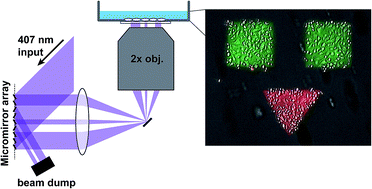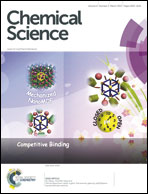Photostick: a method for selective isolation of target cells from culture†
Abstract
Sorting of target cells from a heterogeneous pool is technically difficult when the selection criterion is complex, e.g. a dynamic response, a morphological feature, or a combination of multiple parameters. At present, mammalian cell selections are typically performed either via static fluorescence (e.g. fluorescence activated cell sorter), via survival (e.g. antibiotic resistance), or via serial operations (flow cytometry, laser capture microdissection). Here we present a simple protocol for selecting cells based on any static or dynamic property that can be identified by video microscopy and image processing. The “photostick” technique uses a cell-impermeant photochemical crosslinker and digital micromirror array-based patterned illumination to immobilize selected cells on the culture dish. Other cells are washed away with mild protease treatment. The crosslinker also labels the selected cells with a fluorescent dye and a biotin for later identification. The photostick protocol preserves cell viability, permits genetic profiling of selected cells, and can be performed with complex functional selection criteria such as neuronal firing patterns.

- This article is part of the themed collection: Global challenges: Health & Food

 Please wait while we load your content...
Please wait while we load your content...